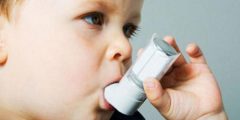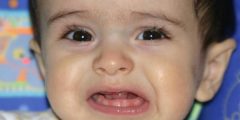Dehydration in children
Dehydration is considered one of the most common health problems that afflict children and adults alike, and a large group of children and infants in particular suffer from it. It results from many factors and causes, including what is internal and related to the functions and processes of the body, including what is related to life and daily practices, imbalance and safety. The diet followed. Dehydration is defined as the body not getting the fluids it needs to give it a normal percentage of moisture, which leads to dehydration with clear signs accompanying the state of dehydration.
Causes of dehydration in children
There are many reasons why children become dehydrated, including:
- The child suffers from diarrhea, as in this case he loses a large percentage of the water and fluids in his body, especially in cases of acute or severe diarrhea. Dehydration is also accompanied by the child being exposed to vomiting and expelling all the fluids from his body in a very short time, as he loses a high percentage of water, fluids and salts. Minerals, noting that this condition affects infants more than others, as a result of their bodies’ sensitivity to many foods, and as a result of their severe influence on differences in weather conditions.
- The temperature becomes extreme and rises significantly, especially in the summer, as the child’s body becomes more in need of fluids and water. The body is also exposed to sweat, which loses these elements, making it more vulnerable to dehydration.
- An increase in the number of urination times normal, and this is due to hormonal disorders and various medical conditions.
- Using some medications and drugs whose side effects lead to increased urination.
- Not drinking sufficient amounts of fluids, especially water.
Read also:How many teeth does the baby have?
Signs of dehydration in children
Signs of dehydration in children include:
- The child has intense and constant thirst, a frequent desire to drink water, and signs of dehydration appear on his body, especially in the area of the lips and face. Severe dehydration leads to peeling of the body’s skin.
- The child cries a lot, but without tears or at a rate of tears less than normal.
- Decrease in the size of the fontanel, which is the soft area of the child’s head. The lower the fontanel, the greater the indication that the child is exposed to dehydration.
- Sunken and tired eyes in children indicate that they are exposed to this problem, especially in the early stages of their lives when their faces are supposed to be bright and healthy.
- The child is exposed to dryness of the mucous membranes, including dryness of the tongue, throat, nose, etc.
- The skin loses its elasticity and vitality, and is easily exposed to scratches and wounds, especially in the abdomen, neck and between the fingers.
- The child’s urination rates are lower than normal, as this indicates a lack of fluids in his body and thus dehydration.
- Significant and noticeable weight loss, accompanied, of course, by a clear decline in appetite and desire to eat foods.









